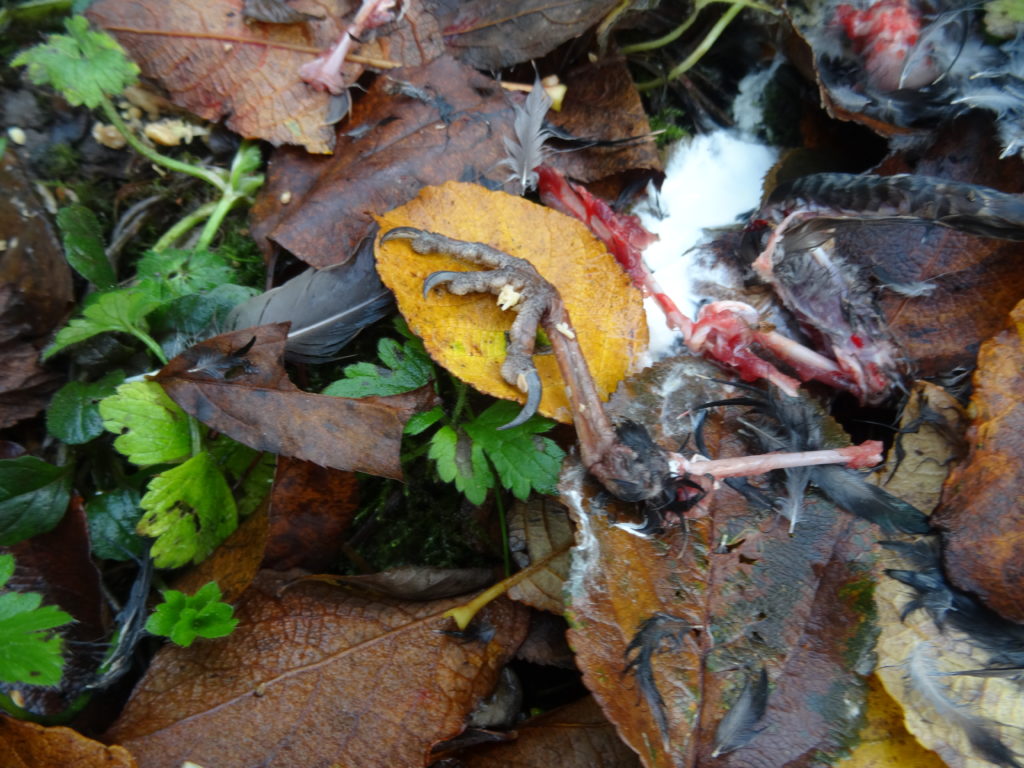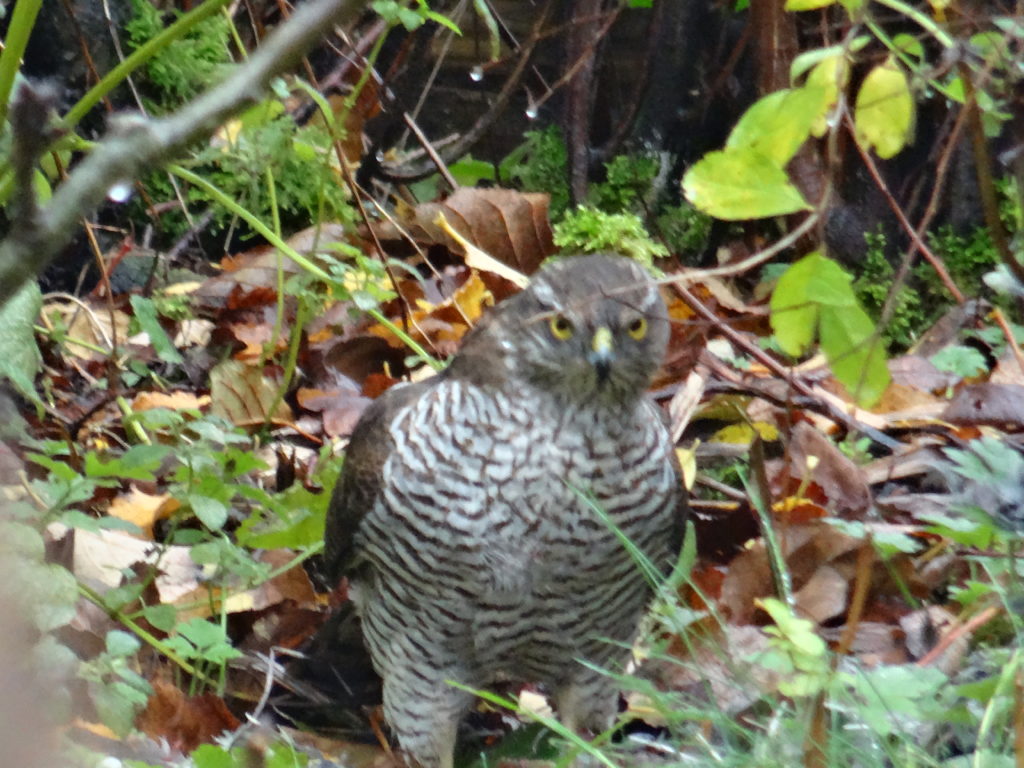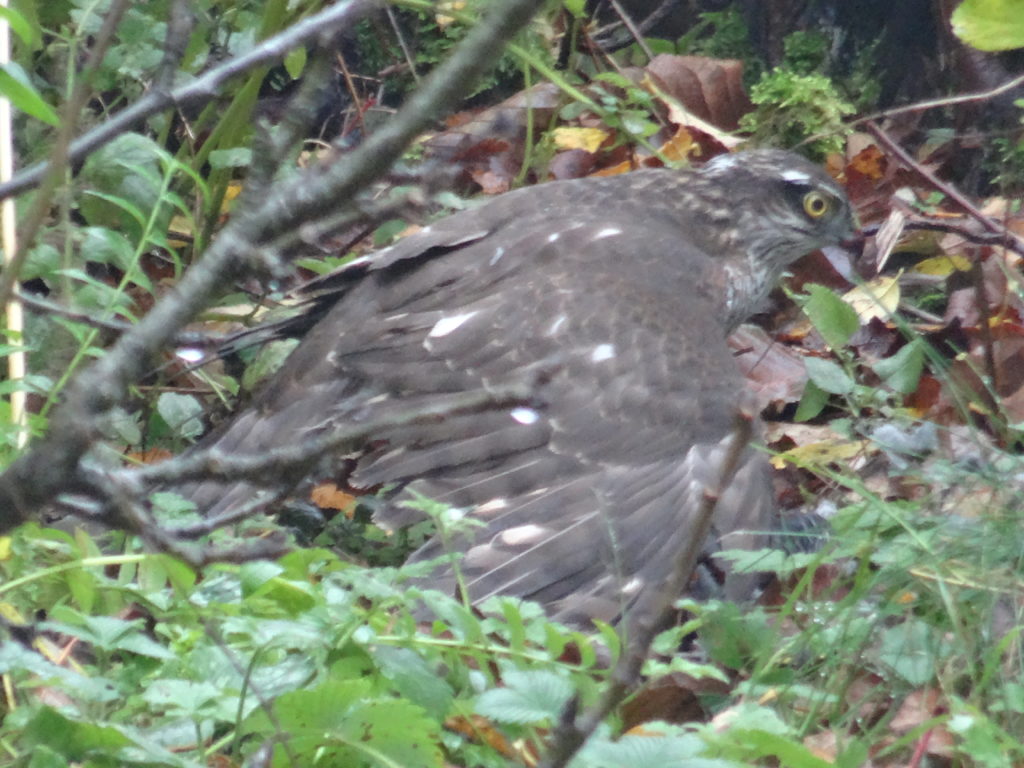It’s time for the annual musings known as Shadows and Reflections. Since so many of our lives were lived in thematic overlap in 2020, we’ve asked our contributors and friends to focus on the small, strange and specific as they look back over the last 12 months. Today it’s the turn of Sue Brooks.

Augury – the interpretation of omens from the behaviour or birds, usually done by an augur who would take the auspices and give a verdict. Either favourable or unfavourable according to the Gods.
I’m sitting by the window thinking about these things and looking down on the exact spot where it happened yesterday.
A hawk came to the garden. Heart in mouth as I took in the barred breast, the mottled brown and cream head, the size of it. I watched the flurry of movements, sideways on to me in the leaf litter under the apple tree, plucking a kill. I checked again — no moustachial stripe, no blue-grey back. Definitely not a peregrine. This was a female sparrowhawk, a full-grown adult in her prime. The third time in 14 years that a female sparrowhawk has graced this old tree.
Moving in slow motion, one step at a time, I find the camera and return to the window. She is restless. She moves towards the outer branches, lifting the corpse — a blackbird — with one foot and placing the other as if to fly. But she doesn’t fly. Something happens in that moment — some breath from one of the Gods perhaps — and she settles and carries on plucking.
It takes a long time, the plucking. She is holding the prey with both feet now and using all her muscle power to tug and snap the sinews and spit out the feathers with quick movements of the head. It looks bloody and incredibly efficient. When she raises her head, she looks straight at me.

The hawk’s eye magnifies eight times more than the human eye. By turning the head when it picks up a movement, it can focus the fovea, the deep pitted cells at the centre of the retina, to make the image flare up into a larger, clearer view. I know this from John Alec Baker, and have his words by heart: the shaken kaleidoscope of colour that stains the deep fovea of his brilliant eye. Is the sparrowhawk seeing me in this way?
She bends to the plucking again. I pause to fiddle with the camera. When I look up, she has changed. She is huddled low over the body, covering it completely from my view with an outstretched wing. She is mantling. She is concealing the prey and exposing her back, making herself vulnerable. I raise the camera, pointing through the dirty window and hesitate, feeling the dishonour of the act.

The mantling, I realise, marks the end of the plucking. She knows of my presence and it is no more than a pattern that is upright and moves from side to side, or forwards and back. It holds no terror. She begins to feed. Both feet on the prey, sometimes little dance steps, up and down to loosen the flesh. She takes her time. There is no hurry. I know she is at ease, and it begins to spread through me too. There is a feeling of being, by some gift of the Gods, an honoured guest at a feast, free to come and go and welcome to stay to the end.
For almost two hours, I drink tea; eat toast; sit at the table; take photos with abandon; open the door and step into the garden to watch the mighty barred breast swell and the yellow eyes gaze directly at me; and think of John Baker.
When she emerges, having eaten her fill, she looks enormous – Goshawk-sized and ready for flight. A quick movement of head and eye, a silent spreading of wings and the garden is empty. I go to the killing place. There is little to see. A puff of grey feathers, two leg bones, one with a claw attached, stripped cleanly of all flesh, and a small bloody nugget of something indigestible to a hawk.